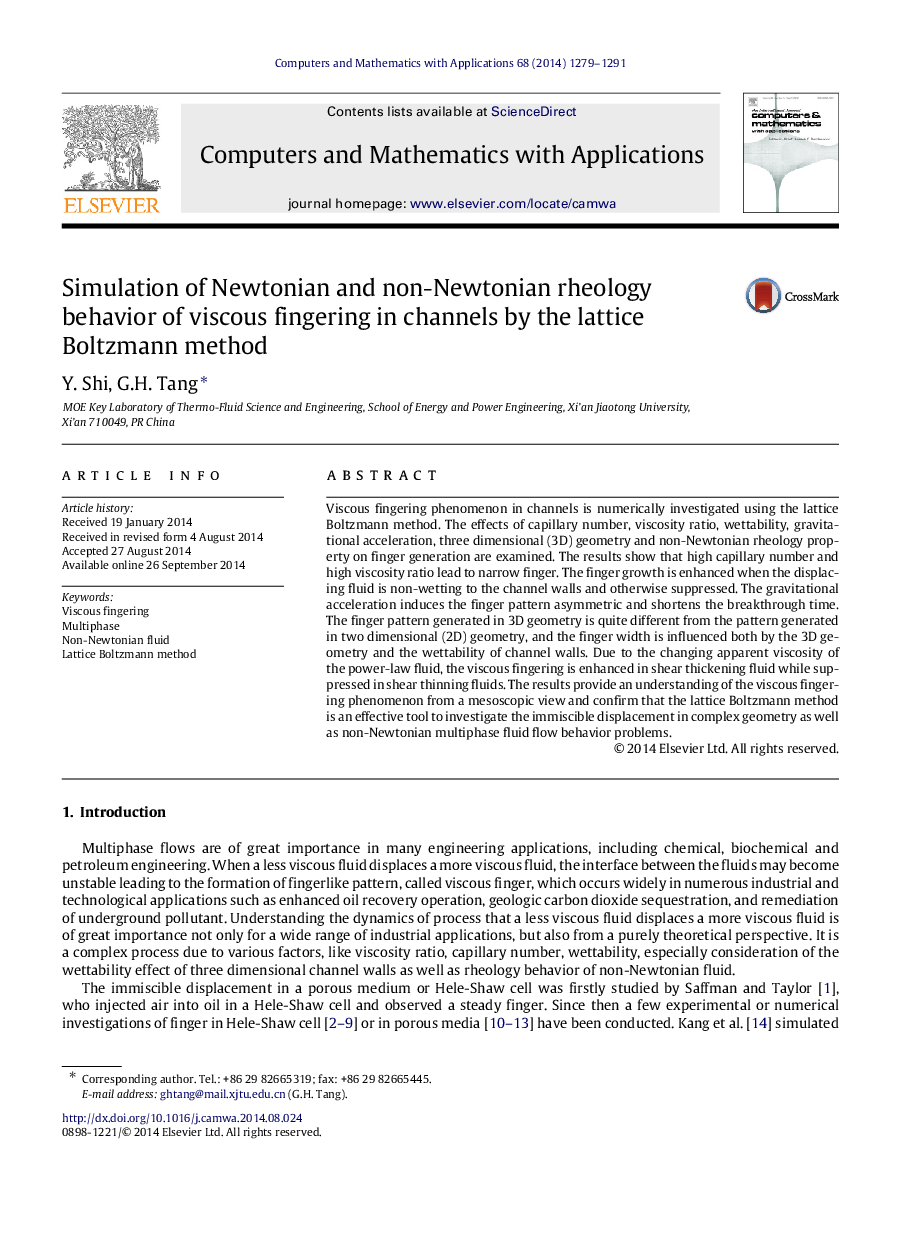| Article ID | Journal | Published Year | Pages | File Type |
|---|---|---|---|---|
| 470389 | Computers & Mathematics with Applications | 2014 | 13 Pages |
Viscous fingering phenomenon in channels is numerically investigated using the lattice Boltzmann method. The effects of capillary number, viscosity ratio, wettability, gravitational acceleration, three dimensional (3D) geometry and non-Newtonian rheology property on finger generation are examined. The results show that high capillary number and high viscosity ratio lead to narrow finger. The finger growth is enhanced when the displacing fluid is non-wetting to the channel walls and otherwise suppressed. The gravitational acceleration induces the finger pattern asymmetric and shortens the breakthrough time. The finger pattern generated in 3D geometry is quite different from the pattern generated in two dimensional (2D) geometry, and the finger width is influenced both by the 3D geometry and the wettability of channel walls. Due to the changing apparent viscosity of the power-law fluid, the viscous fingering is enhanced in shear thickening fluid while suppressed in shear thinning fluids. The results provide an understanding of the viscous fingering phenomenon from a mesoscopic view and confirm that the lattice Boltzmann method is an effective tool to investigate the immiscible displacement in complex geometry as well as non-Newtonian multiphase fluid flow behavior problems.
